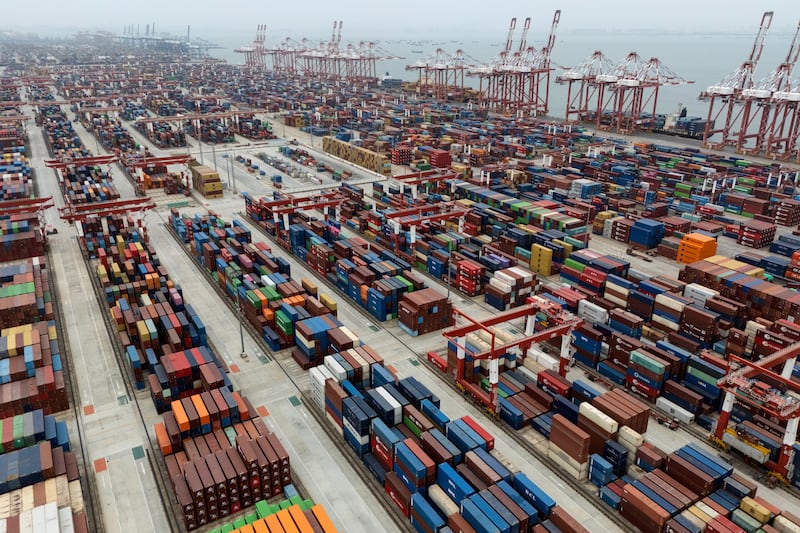- U.S. stocks were on the rise Monday after President Trump's comments about China trade fees.
- Last week, the president had signaled 'massive' tariff increases on China could be coming.
- Issues are currently centered on China's policies on rare earth minerals exports.
Stocks rose sharply Monday as investors responded positively to a social media post from President Donald Trump over the weekend that appeared to reverse a threat he issued late last week to significantly increase trade tariffs on China.
Last Friday, Trump signaled he was considering expanded tariff fees in response to China’s announced changes to export policies on rare earth minerals.
In a Sunday posting to Truth Social, the president struck a markedly different tone from a Friday posting that indicated he was exploring “a massive increase of Tariffs on Chinese products” in response to new Chinese export controls on rare earth materials.
“Don’t worry about China, it will all be fine!,” Trump wrote Sunday. “Highly respected President Xi just had a bad moment. He doesn’t want Depression for his country, and neither do I. The U.S.A. wants to help China, not hurt it!!!”

According to an analysis shared by Bespoke Investment Group, about $2 trillion in value was erased from the U.S. stock market following Trump’s Friday social media post, per a report from CNBC. At the end of regular trading on Friday, the S&P 500 had lost 2.7% of its overall value in the worst performance for the index since early April.
As of midday Monday, the Dow Jones Industrial Average was up over 600 points on the day, the S&P 500 gained 1.56% and the Nasdaq exchange was reporting over 2% in gains.
Tobin Marcus, head of U.S. policy at Wolfe Research, told CNBC that Trump’s Sunday pronouncement seemed to indicate that the president was backing off on taking action against China while trade talks were still under way.
“The underlying tensions and uncertainty remain, and we still don’t think an all-encompassing deal is anywhere close, but this tamps down concerns about the risk of 100% tariffs or disruptive export controls while talks continue,” Marcus said. “Trump seems to be telling investors they can safely buy the dip, and given their track record this year of doing so even when it seemed risky, we expect markets will accept this invitation.”
Rare earth elements driving trade tensions, again

Issues surrounding rare earth minerals have been an on-again, off-again sticking point in U.S.-China trade dealings including earlier this year when Trump accused the Asian economic powerhouse of breaching a temporary trade agreement struck in May. In a follow-up call in June, Trump said he and Chinese President Xi Jinping had cleared up “any questions respecting the complexity of rare earth products.”
China controls 90% of the world’s rare earth elements production capacity and, according to the U.S. Department of Energy, the minerals play a critical role in U.S. national security, energy independence and economic growth. Many advanced technologies have components made from rare earth materials such as magnets, batteries, phosphors and catalysts.
U.S. total goods trade, exports plus imports, with China was an estimated $582 billion in 2024 according to the Office of the U.S. Trade Representative. U.S. imports of Chinese made goods represent the majority of that volume and totaled over $438 billion in 2024.


